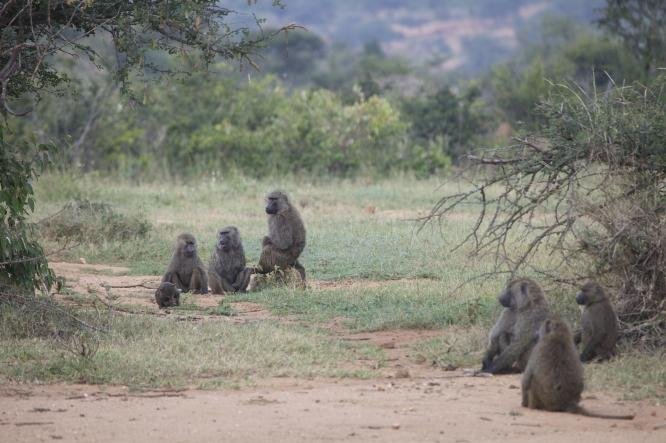An olive baboon troop at the Mpala Research Centre in Kenya. Although baboons live in hierarchical groups, group movement can be dictated by any member, as long as he or she has the votes in following feet. Photo by Rob Nelson/Smithsonian Tropical Research Institute
LAIKIPIA DISTRICT, Kenya, June 19 (UPI) -- The Athenians weren't necessarily the first democratizers. According to new research out of Kenya, baboons rely on majority rule, not elders, to dictate daily movements.
When it comes to deciding where a roving group of baboons moves to next, the mammals literally vote with their feet. And every vote counts the same.
"Despite their social status, it's not necessarily the biggest alpha males that influence where groups go," Margaret Crofoot, a researcher with the Smithsonian Tropical Research Institute, said in a press release. "Our observations suggest that many or all group members can have a voice, even in highly stratified societies."
When it comes to feeding and mating, social status moves some to the front of the line. But when researchers used GPS to track the individual movements of a troop of wild olive baboons (Papio anubis), they found neither sex nor social status had any influence on group movement.
The researchers used computational models to analyze group movement and answer questions: how changes of direction are dictated; how decision making is deferred to the group; who gets to take initiative in blazing new trails.
"We used some very creative computational analysis to isolate patterns of individual movement initiation attempts," said Smithsonian post-doctoral fellow Damien Farine.
Farine and Ariana Strandburg-Peshkin, a student at Princeton University, co-authored a new paper based on their findings -- published this week in the journal Science.
The researchers found that any individual in the troop can initiate a new direction, or choose to follow an initiative-taking neighbor. As two begin to depart in a new direction, more will follow. A constant collective decision-making process dictates the troop's path.
Should an initiator begin to diverge and notice he or she has no companions, the trailblazer will drift back to the group.
When two groups initiate slightly different movements, the followers typically make a compromise and plow ahead at an angle in between the two divergent directions. If two groups of initiators begin to split in too disparate of directions, the followers default to democracy, majority rules. Whichever initiating group is largest gets the followers' vote of confidence.
"We are looking at are very broad patterns here," said Crofoot. "The next step will be to look at context to figure out what motivates individual baboons to initiate movement in the first place, and if some individuals can take advantage of certain situations to disproportionately influence the group."















